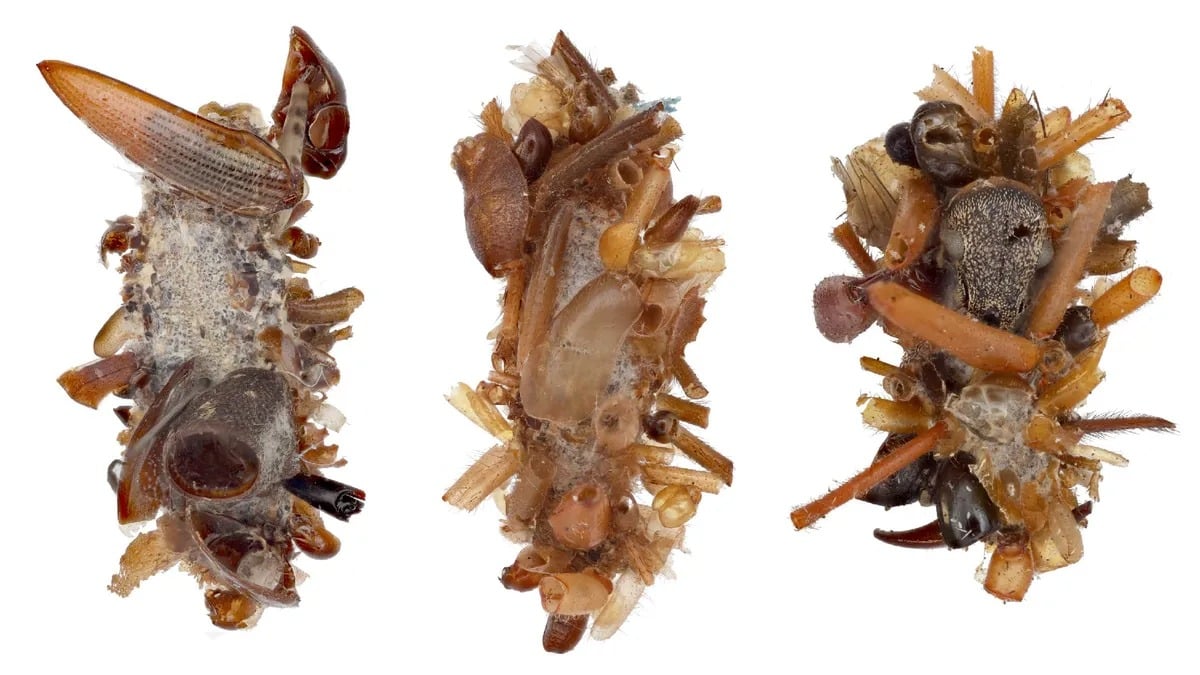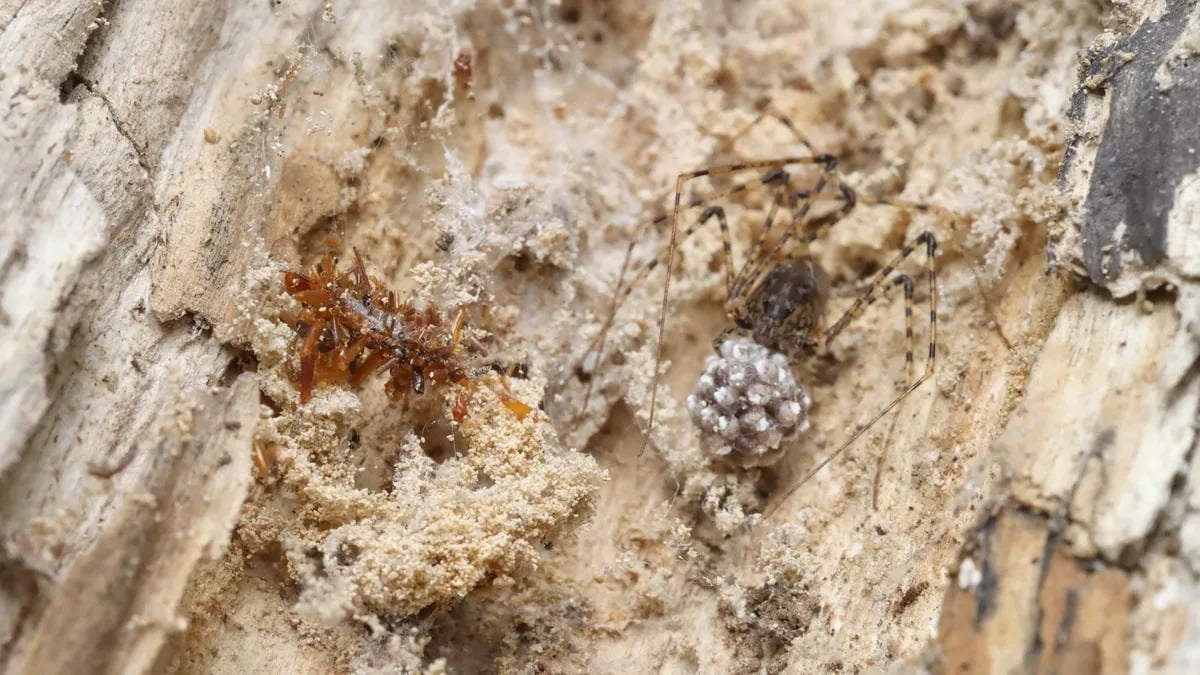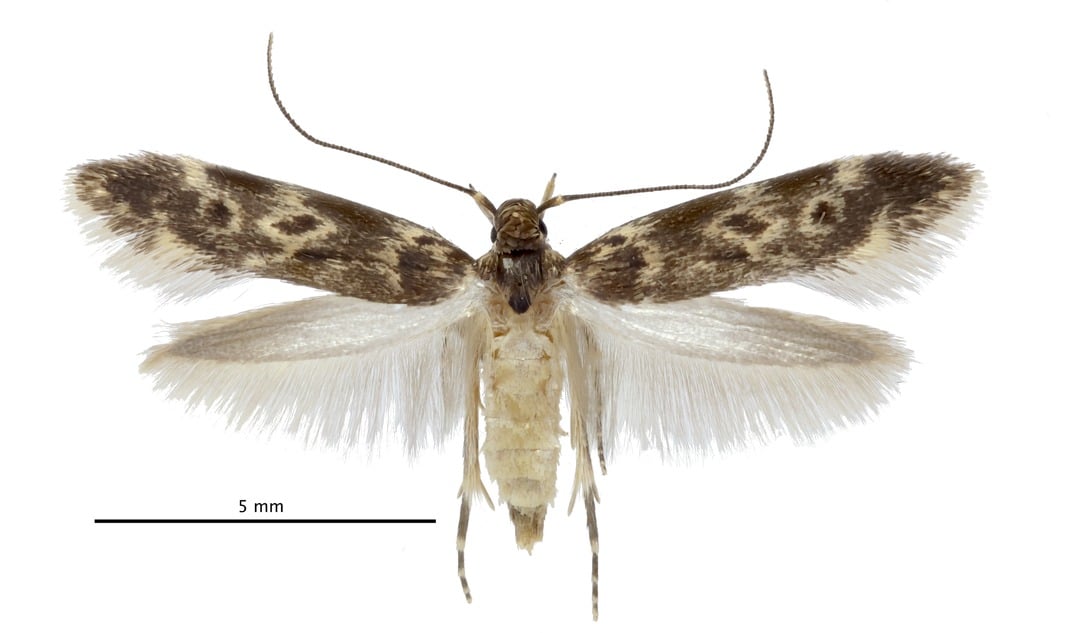Carnivorous Caterpillar Disguises Itself With Dead Insect Body Parts
Language
Reading Level
Listen to Article
Alignment

Caterpillars are usually seen as harmless, plant-munching larvae. But a newly identified species discovered on the Hawaiian island of Oahu challenges that reputation. Measuring just 5 mm long, the "bone collector" caterpillar feeds on dead insects found in spider webs. It then repurposes the remains, wearing body parts like beetle shells and weevil heads as camouflage.
The caterpillar belongs to the Hyposmocoma genus, a diverse group of about 350 species of moths found only in Hawaii. These caterpillars build silk cases, which they carry on their backs. The cases are often decorated with bits of wood, algae, or shells for protection and camouflage. The bone collector shares this case-building skill. But instead of using plant matter, it decorates its case with insect remains. Interestingly, the caterpillar doesn't use random scraps. It carefully selects specific body parts and even trims them to fit its case precisely.
"It’s gross at one level, but it's also kind of adorable. They're cruising around like, 'Oh, this looks delicious. I'll eat some of this and then put the rest on my back,'" said University of Hawaii professor Daniel Rubinoff. He led the study published in the journal Science on March 26, 2025.

Rubinoff and his team believe this clever disguise serves an important purpose. The bone collector lives in small crevices that spiders have covered with webs and turned into homes. To avoid detection, it usually hunts at night. Coating its silk casing with body parts that smell like dead prey helps protect it further. As a result, the caterpillar is rarely eaten or even attacked by the spiders.
"They’re going around and scavenging in the spiderweb, and they will also eat stuff that the spider has cached," Rubinoff said. "They will take down live prey if they can get it, but they’re really cumbersome, so they’re not really chasing down very many things."
The bone collector is believed to have evolved at least six million years ago. This is older than the island of Oahu. This suggests that the moths may have come from an even older Hawaiian island that has since disappeared.

Carnivorous caterpillars, like the bone collector, are extremely uncommon. Of the more than 150,000 known species of moths and butterflies, only about 0.13 percent are carnivorous. The bone collector itself is also rare. In over two decades studying Hawaii’s butterflies and moths, Rubinoff and his team found just 62 individuals. All were within a roughly six square mile (15 sq. km) area on Oahu. This eerie little scavenger is not just biologically fascinating — it is also one of the most mysterious caterpillars on Earth.
Resources: Livescience.com, Smithsonianmag.com, cosmosmagazine.com